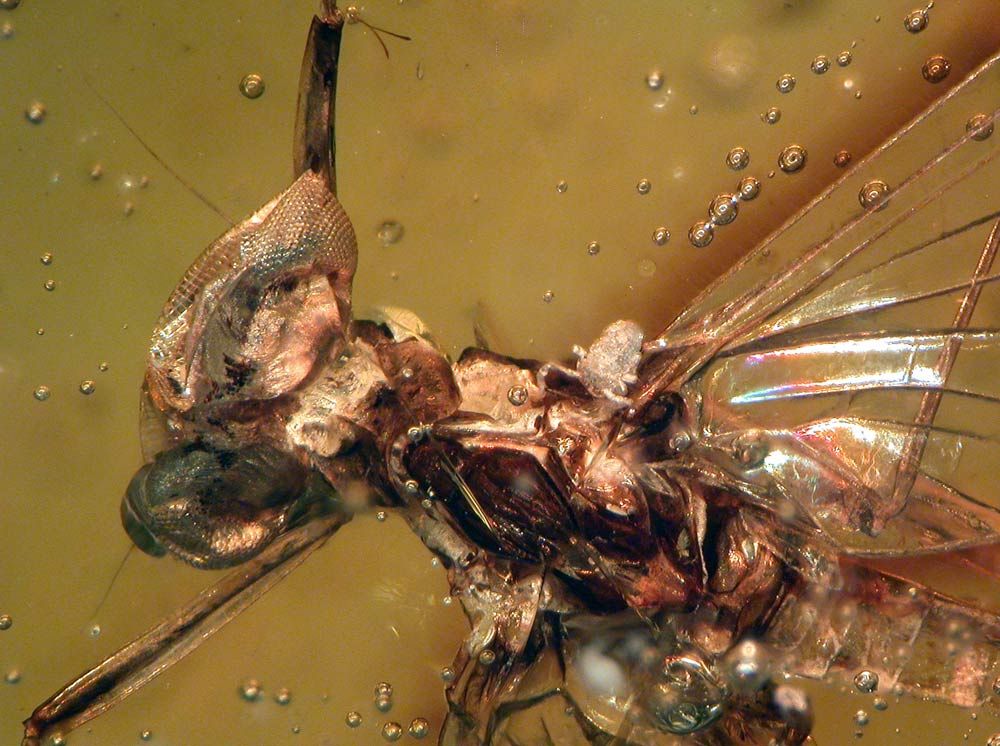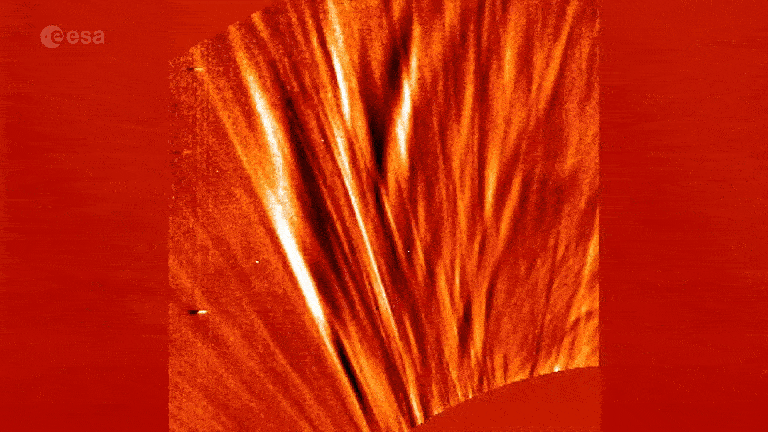Tiny Critter Hitchhiked on Mayflies, Fossil Reveals

Creatures about the size of a grain of salt could apparently ride winged insects by using prehensile antennas, researchers say.
This discovery, based on fossils trapped in amber, suggest the descendants of these microscopic beasts might still hitchhike flights today to spread around the globe, scientists added.
Investigators analyzed 16-million-year-old chunks of amber unearthed by amber miners in the Dominican Republic in 2008. Amber is fossilized tree resin, and before it hardened, this ooze often dripped over bugs and other wildlife perched on its tree's bark, entombing them for up to more than 200 million years.
As researchers looked at this amber using microscopy and a CT scan, they saw a mayfly, a very rare insect in Dominican amber. When they gave the 5-millimeter-long winged insect a closer look, they spotted a hitchhiker on its back, just 228 microns long, a bit smaller than the average grain of salt.
The hitchhiker was a springtail, creatures found in large numbers in soil across the world and one of the most abundant groups of animals on Earth. Springtails, with insects, spiders, crabs and other buglike creatures, make up a joint-legged group known as the arthropods. Springtails are six-legged like insects, but constitute a separate, ancient group.
Springtails are known for springing away from danger using tail-like appendages. This fossil specimen could very well have leapt onto the mayfly, where it apparently used its antennas to hook onto the base of the mayfly's wing. The mayfly might have barely noticed the springtail — "the springtail is just a small speck on the mayfly," said researcher David Penney, a paleoentomologist at the University of Manchester in England.
Previous research hinted that springtails might have traveled across the world via the wind or ocean currents. A prior discovery in amber also suggested that springtails could catch rides on arachnids known as daddy longlegs or harvestmen. This new find reveals springtails can hitchhike on flights as well, giving them yet another way to disperse across the globe.
Sign up for the Live Science daily newsletter now
Get the world’s most fascinating discoveries delivered straight to your inbox.
This research suggests scientists might want to see if present-day springtails catch rides on creatures as well.
"In this case, amber may not only be shedding light on the past, but the present as well," Penney told LiveScience. "There could be something happening right under our noses at the present with springtails of which we are unaware. The same may be true of mayflies, as this is the first example, living or fossil, of adult mayflies transporting another species."
The scientists detailed their findings online today (Oct. 17) in the journal PLoS ONE.
Follow LiveScience on Twitter @livescience. We're also on Facebook & Google+.












